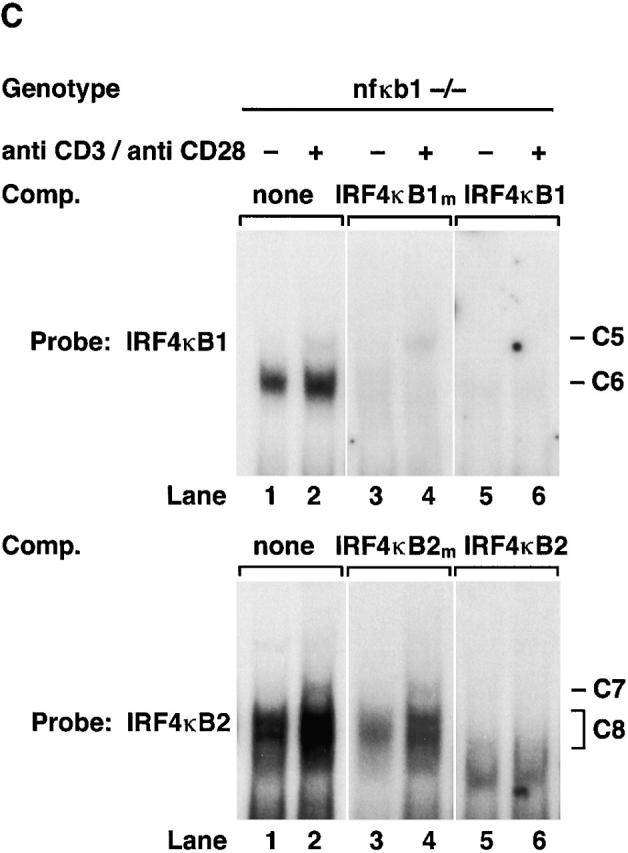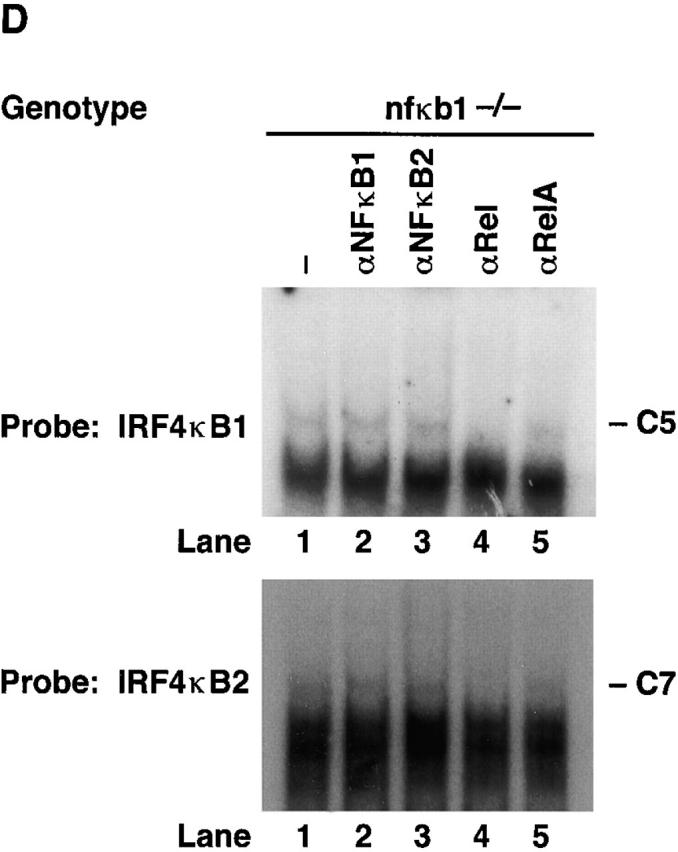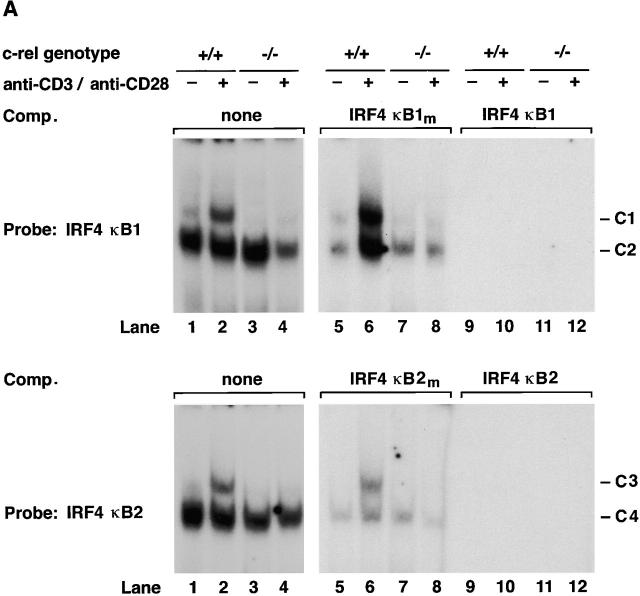Figure 3.


Rel/NF-κB complexes in resting and mitogen-stimulated T cells. Nuclear extracts (1–2 μg) isolated from purified normal, c-rel −/−, and nfkb1 −/− splenic T cells stimulated with anti-CD3 plus anti-CD28 antibodies for 2 h, then incubated with 32P-radiolabeled IRF4 κB1 or IRF4 κB2 probes were resolved on 5% nondenaturing polyacrylamine gels and exposed to autoradiography for 8–24 h at −70°C. (A) Nuclear complexes rapidly induced by mitogen that bind IRF4 κB1 and IRF4 κB2 are absent in c-rel −/− T cells. Nuclear extracts from resting (lanes 1, 3, 5, 7, 9, and 11) and anti-CD3/anti-CD28–stimulated (lanes 2, 4, 6, 8, 10, and 12) normal (lanes 1, 2, 5, 6, 9, and 10) and c-rel −/− (lanes 3, 4, 7, 8, 11, and 12) T cells were preincubated in the absence (lanes 1–4) or presence of a 50-fold molar excess of unlabeled mutant (κB1m, κB2m: lanes 5–8) or wild-type (κB1, κB2: lanes 9–12) probe before adding radiolabeled IRF4 κB1 or IRF4 κB2. The inducible slow mobility complexes binding to κB1 and κB2 are designated C1 and C3, respectively, while the constitutive fast mobility complexes binding κB1 and κB2 are designated C2 and C4, respectively. (B) Inducible complexes C1 and C3 are Rel/NF-κB1 heterodimers. Nuclear extracts from resting (lanes 1–4) and anti-CD3/anti–CD28 stimulated (lanes 5–8) wild-type splenic T cells were incubated with preimmune (lanes 1 and 5) or NF-κB1 (lanes 2 and 6), Rel (lanes 3 and 7) or RelA (lanes 4 and 8)–specific sera before adding radiolabeled IRF4 κB1 or IRF4 κB2 probes. (C) Mitogen-induced κB binding complexes in nfkbl −/− T cells. Nuclear extracts from resting (lanes 1, 3, and 5) and anti-CD3/anti–CD28 stimulated (lanes 2, 4, and 6) nfkbl −/− T cells were preincubated in the absence (lanes 1 and 2) or presence of a 50-fold molar excess of unlabeled mutant (κB1m, κB2m: lanes 3 and 4) or wild-type (κB1 or κB2: lanes 5 and 6) binding sites before adding radiolabeled IRF4 κB1 or IRF4 κB2 probes. The inducible slow mobility complexes binding to κB1 and κB2 are designated C5 and C7, respectively, while the constitutive fast mobility complexes binding κB1 and κB2 are designated C6 and C8, respectively. (D) Inducible κB binding complexes C5 and C7 in nfkbl −/− T cells are Rel homodimers. Nuclear extracts from anti-CD3/anti-CD28–stimulated nfkbl −/− T cells were incubated with preimmune (lane 1) or NF-κB1 (lane 2), NF-κB2 (lane 3), Rel (lane 4), or RelA (lane 5)–specific sera before adding radiobalelled IRF4 κB1 or IRF4 κB2 probes.


